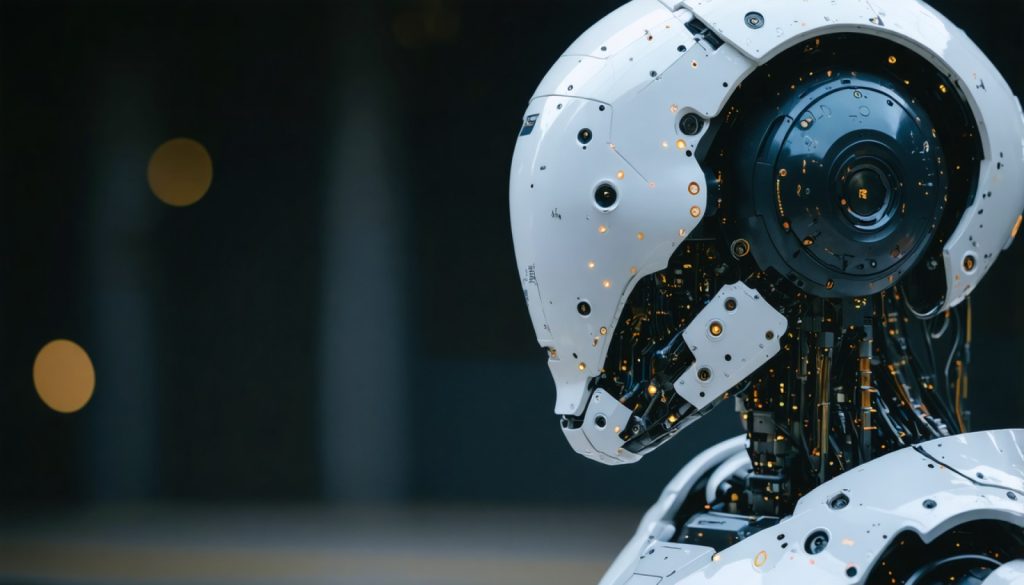
- OpenAI’s new AI image generator for ChatGPT showcases cutting-edge capabilities in creating detailed, photorealistic images and raises copyright concerns.
- Social media is buzzing with AI-generated creativity, including memes inspired by Japanese animation, highlighting the vast potential of AI applications.
- The AI industry is becoming fiercely competitive, with companies like Elon Musk’s Grok pushing giants like Google and OpenAI to adopt more aggressive innovation strategies.
- AI advancements are transforming sectors like medicine, education, and finance, exemplified by Nvidia’s remarkable stock increase.
- The “AI Appliers” era emphasizes utilizing AI to revolutionize traditional industries, with companies like Monolithic Power Systems, Workday Inc., and Xometry Inc. leading the charge.
- This AI evolution presents both opportunities and challenges, demanding careful balance between innovation and ethical considerations by industry leaders and regulators.
The world stands on the cusp of a new era where AI drives not only technology but culture, ethics, and the very fabric of society. OpenAI’s bold new leap is illustrative of this fast-evolving landscape. Their latest AI image generator for ChatGPT emerges with an audacious level of freedom, capable of conjuring phantasmal photorealistic images, deftly manipulating existing visuals, and even skirting around the edges of copyright laws. Social media platforms are awash in whimsical AI-generated memes paying homage to Japanese animation legends like Studio Ghibli, illustrating the endless creative avenues AI now traverses.
Behind this surge of innovation lies fierce industry competition. Smaller, scrappier AI firms like Elon Musk’s Grok and China’s DeepSeek are unencumbered by the cautious restraints traditionally observed, prompting even industry titans like OpenAI and Alphabet to loosen their guardrails in the race for dominance. Google’s hasty push to release watermark-removing AI tools is a testament to this urgent arms race. Yet, the rush to innovate comes with burdensome responsibilities. With Amazon’s Alexa+ seizing control of smart homes and Alphabet’s Gemini overhaul potentially prying into personal data, the line between tech aid and intrusion blurs ominously.
Meanwhile, the enchantment of AI’s capabilities extends beyond its ethical quandaries. AI’s efficiency is improving human life in dramatic ways—driving advancements in medicine with AI-developed drugs, democratizing education through free homework assistance, and even setting new financial heights for investors. The ascent of Nvidia, whose stock skyrocketed by an astonishing 2,500% since May 2019, underlines the lucrative promise held by companies at the AI frontier.
This momentum ushers us into what experts term the “AI Appliers” era, which poses that the real fortune lies not in crafting AI, but in wielding its formidable power to disrupt and rejuvenate traditional sectors. Three companies stand as prime exemplars:
1. Monolithic Power Systems (MPWR) specializes in power management chips, the lifeblood of AI hardware. Despite recent market tremors, its potential to support burgeoning AI infrastructure keeps it an attractive proposition at a modest 20 times forward earnings.
2. Workday Inc. (WDAY), emerging from its PeopleSoft roots, leverages AI to transform human resources through cloud-native solutions. Their AI-assistive tools promise to redefine how firms manage talent and operations, scaling the balance between technological efficacy and human touch.
3. Xometry Inc. (XMTR) pivots away from selling 3D printers to offering on-demand manufacturing services. By harnessing AI to bridge traditional manufacturing gaps, Xometry is revolutionizing how companies access and execute complex production tasks.
In the grand tapestry of AI’s burgeoning reality, these companies shine as harbingers of what’s possible when artificial intelligence meets human ingenuity. Yet, this is a double-edged sword—the same innovations that propel us forward also have the power to divide, deepen societal gaps, and challenge our moral compasses. As AI continues to mature, the onus falls on both innovators and regulators to navigate these turbulent waters with care, ensuring that technology fosters progress without forsaking humanity’s core values.
Unmasking AI’s Future: Opportunities and Threats in a Rapidly Evolving Landscape
AI’s Impact on Industries and Society
The world is indeed witnessing a pivotal shift with AI not just driving technology but also reshaping the cultural and ethical underpinnings of society. OpenAI’s latest AI image generator, integrated with ChatGPT, exemplifies how AI can traverse the boundaries between creativity and legality. This tool can generate astonishingly realistic images, sparking creativity across social media with AI-generated memes inspired by cultural giants like Studio Ghibli.
Industry Competition and Innovation
The AI industry is abuzz with fierce competition. Emerging players like Elon Musk’s Grok and China’s DeepSeek, alongside giants like OpenAI and Alphabet, are pushing boundaries, sometimes at the cost of ethical considerations. Google’s recent release of watermark-removing AI tools illustrates the headlong rush to innovate, underscoring the critical need for balance between innovation and integrity.
How AI Transforms Key Sectors
AI’s efficiency is reshaping sectors like healthcare, education, and finance substantially. For instance:
– Healthcare: AI-driven drug development is accelerating discovery processes and personalizing treatment plans, impacting patient outcomes positively.
– Education: Tools providing free homework assistance are democratizing education, leveling the playing field for students of varied backgrounds.
– Finance: Companies like Nvidia lead the charge in AI-driven financial innovations, evidenced by their stock surge due to AI hardware demand.
The “AI Appliers” Era: A New Frontier
A new era dubbed the “AI Appliers” era is emerging, emphasizing the use of AI to revolutionize traditional industries. Key players include:
– Monolithic Power Systems (MPWR): With a specialization in power management chips vital for AI hardware, this company remains promising even amid market fluctuations.
– Workday Inc. (WDAY): This company’s AI-powered cloud solutions are transforming HR, blending efficiency with human-centric management.
– Xometry Inc. (XMTR): Transitioning from 3D printer sales to offering AI-driven manufacturing services, Xometry is redefining production methods across industries.
Predictions and Future Trends
Experts predict an increased focus on AI ethics and regulation to address privacy concerns and potential intrusions by AI tools like Amazon’s Alexa+ and Alphabet’s Gemini. The dialogue around balancing technological advancements with ethical frameworks will likely intensify.
Real-World Use Cases
1. Healthcare AI Assistants: Utilize AI for preliminary diagnosis and app-based healthcare recommendations. These tools automate patient care, thus allowing more precise medical attention.
2. Education Platforms: Incorporate AI-enabled platforms in classrooms to enhance personalized learning strategies for students based on individual learning paces.
Actionable Recommendations
– For Entrepreneurs: Consider integrating AI tools to enhance operational efficiency or create new business models centered around AI capabilities.
– For Investors: Identify AI-focused firms leading in ethical innovation, as these may provide sustainable investment opportunities aligned with future regulatory environments.
In summary, while AI’s horizon shines brightly with opportunities, it undeniably casts shadows of ethical challenges. Innovators and regulators must walk a fine line to ensure progress complements humanity’s core values, not compromise them. As we navigate this promising yet perilous path, the onus of responsibility lies with both technology creators and users to forge an equitable future. For more insights into AI advancements and trends, visit OpenAI.



